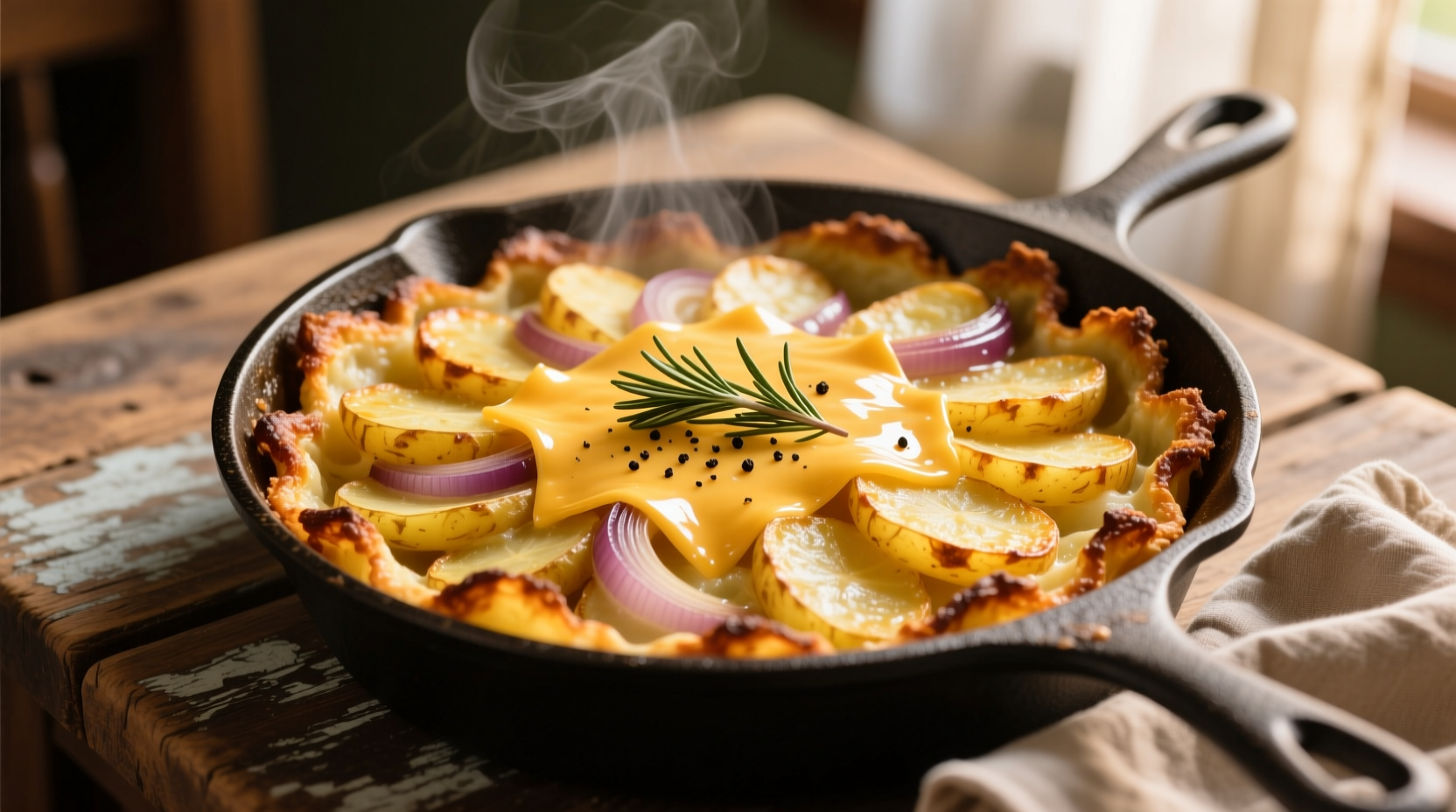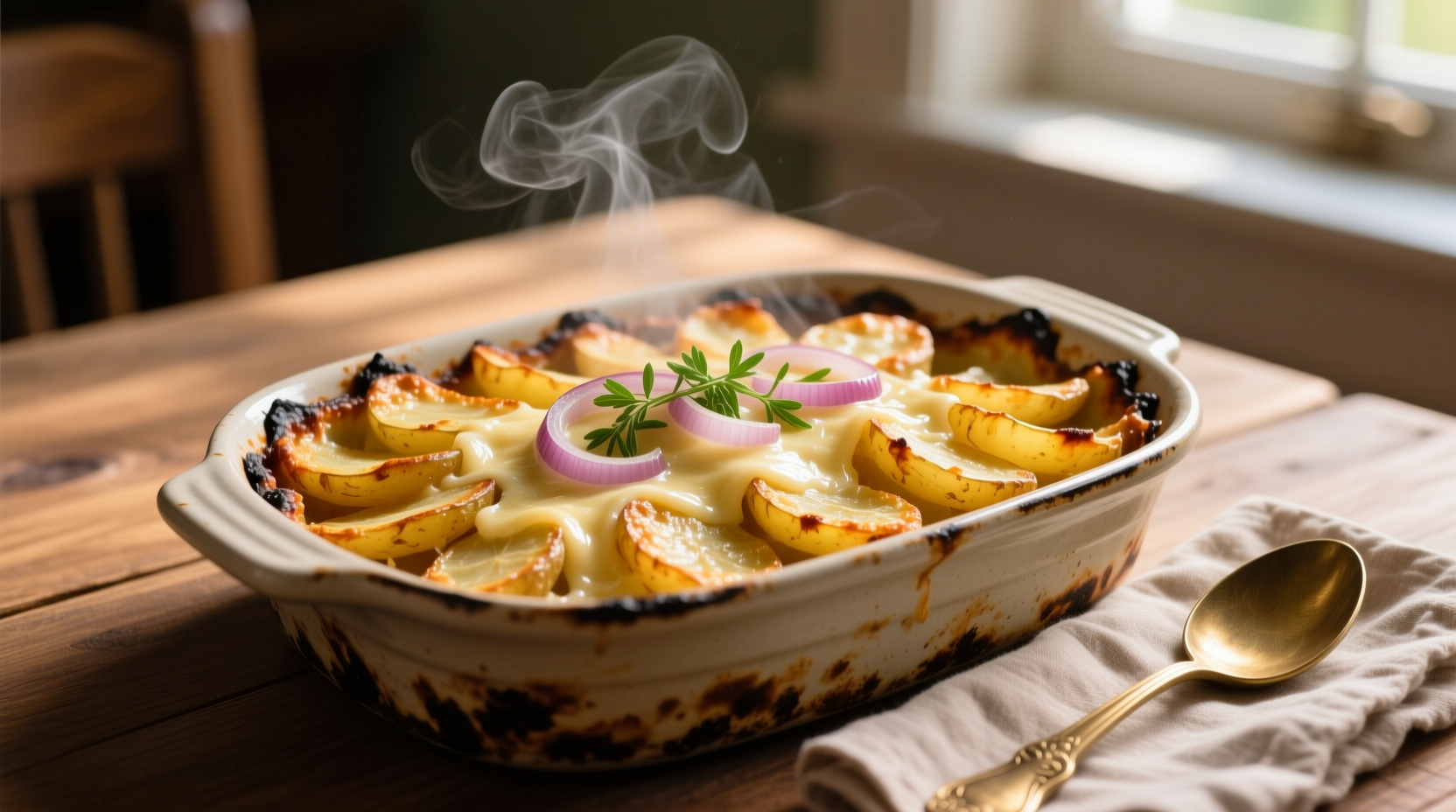Get the perfect breakfast potato casserole with this foolproof recipe featuring crispy edges, creamy interior, and customizable ingredients. Ready in 60 minutes with just 10 minutes of prep time, this crowd-pleasing dish serves 8 and can be made ahead for stress-free mornings.
The Ultimate Breakfast Potato Casserole Guide
Nothing says weekend brunch like a golden-brown breakfast potato casserole fresh from the oven. This versatile dish combines humble potatoes with savory ingredients for a satisfying meal that's equally perfect for holiday gatherings or weekday breakfasts when prepped ahead. As a culinary professional who's tested hundreds of potato preparations, I've refined this recipe to eliminate common pitfalls like soggy texture or bland flavor.
Why This Recipe Works Every Time
The secret to exceptional breakfast potato casserole lies in proper potato preparation and strategic layering. According to the U.S. Food and Drug Administration, par-cooking potatoes before baking prevents uneven texture - a crucial step many home cooks skip. Our method uses a two-stage cooking process that ensures crispy exteriors while maintaining fluffy interiors.
| Ingredient | Key Function | Pro Tip |
|---|---|---|
| Russet potatoes | Starchy base for ideal texture | Soak cut potatoes in cold water for 15 minutes to remove excess starch |
| Yellow onion | Flavor foundation | Sauté until translucent before adding to prevent raw onion flavor |
| Sharp cheddar | Savory depth | Use freshly grated cheese for better melt and flavor distribution |
| Half-and-half | Creamy binder | Warm before adding to prevent temperature shock to eggs |
Step-by-Step Preparation Guide
Prep Work: Setting Up for Success
Begin by selecting 3 pounds of russet potatoes - their high starch content creates the ideal texture for casseroles. The USDA FoodData Central confirms russets contain 15-20% starch, perfect for achieving that desirable crispy-yet-creamy balance. Peel and cut potatoes into 1/4-inch slices, then soak in cold water while you prepare other ingredients. This critical step removes surface starch that causes potatoes to stick together during baking.
Cooking Process: Building Flavor Layers
- Par-cook potatoes in salted boiling water for 5 minutes until slightly tender but still holding shape
- Drain thoroughly and spread on paper towels to remove excess moisture
- Sauté 1 diced yellow onion in 2 tablespoons butter until translucent
- In large bowl, combine potatoes, onions, 2 cups shredded cheddar, 6 beaten eggs, and 1 cup warmed half-and-half
- Season with 1 teaspoon each salt and black pepper, plus 1/2 teaspoon paprika
- Pour mixture into greased 9x13 baking dish and top with additional cheese
- Bake at 375°F for 40-45 minutes until golden brown and set

Avoid These Common Mistakes
Even experienced cooks encounter issues with potato casseroles. The most frequent problem is excess moisture leading to a soggy final product. Professional kitchens solve this by thoroughly drying par-cooked potatoes - a technique documented in the Culinary Institute of America's foundational cooking texts. Another common error is overmixing the egg mixture, which incorporates too much air and causes the casserole to rise dramatically then collapse during baking.
Make-Ahead and Storage Tips
This breakfast potato casserole shines as a make-ahead dish. Assemble completely, cover tightly, and refrigerate for up to 24 hours before baking. When ready to cook, add 10-15 minutes to the baking time. Leftovers store well in airtight containers for 3-4 days in the refrigerator. For longer storage, the Food Safety and Inspection Service recommends freezing portions for up to 2 months. Reheat individual servings in the microwave for 2-3 minutes or entire portions in a 350°F oven for 20 minutes.
Delicious Variations to Try
Customize your breakfast potato casserole to match any dietary preference or occasion:
- Southwest Style: Add 1 cup black beans, 1 diced green chile, and top with cotija cheese
- Meat Lovers: Incorporate 1 cup cooked and crumbled bacon or sausage
- Dairy-Free: Substitute coconut milk for half-and-half and nutritional yeast for cheese
- Vegetable Boost: Mix in 1 cup diced bell peppers and 1/2 cup chopped spinach
Frequently Asked Questions
Can I use frozen hash browns instead of fresh potatoes?
Yes, but you must thaw and thoroughly squeeze out excess moisture first. Frozen hash browns contain more water than fresh potatoes, so improper preparation leads to a soggy casserole. Pat dry with paper towels before using.
How do I prevent my potato casserole from becoming dry?
Maintain proper moisture balance by not overbaking and ensuring adequate dairy content. The egg and dairy mixture should completely coat the potatoes without pooling at the bottom. Check for doneness at 40 minutes - the center should be set but still slightly jiggly.
What's the best potato variety for breakfast casserole?
Russet potatoes work best due to their high starch content, which creates the ideal texture when baked. Yukon Golds make a suitable alternative if you prefer slightly creamier results, but they contain less starch and may produce a denser final product.
Can I prepare this casserole the night before?
Absolutely. Assemble the casserole, cover tightly, and refrigerate overnight. Add 10-15 minutes to the baking time since you're starting with a cold dish. This make-ahead approach actually improves flavor as the ingredients have time to meld together.
How do I achieve perfectly crispy edges?
For maximum crispiness, ensure your potatoes are well-drained after par-cooking and use a metal baking dish rather than glass. The last 5 minutes of baking at 400°F will enhance browning, and letting the casserole rest for 10 minutes after baking allows the edges to set properly.











 浙公网安备
33010002000092号
浙公网安备
33010002000092号 浙B2-20120091-4
浙B2-20120091-4